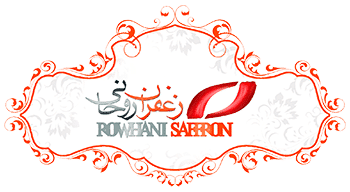The documented history of saffron cultivation spans more than three millennia. The wild precursor of domesticated saffron crocus was Crocus cartwrightianus. Human cultivators bred wild specimens by selecting for unusually long stigmas; thus, a sterile mutant form of C. cartwrightianus, C. sativus, likely emerged in late Bronze Age Crete.
Eastern
Buddhist adepts pray in the Hundred Dragons Hall, Buddha Tooth Relic Temple and Museum, Singapore, wearing saffron-coloured robes.
Saffron was detailed in a 7th-century BC Assyrian botanical reference compiled under Ashurbanipal. Documentation of saffron’s use over the span of 4,000 years in the treatment of some 90 illnesses has been uncovered.Saffron-based pigments have indeed been found in 50,000 year-old depictions of prehistoric places in northwest Iran. The Sumerians later used wild-growing saffron in their remedies and magical potions. Saffron was an article of long-distance trade before the Minoan palace culture’s 2nd millennium BC peak. Ancient Persians cultivated Persian saffron (Crocus sativus ‘Hausknechtii’) in Derbena, Isfahan, and Khorasan by the 10th century BC. At such sites, saffron threads were woven into textiles, ritually offered to divinities, and used in dyes, perfumes, medicines, and body washes. Saffron threads would thus be scattered across beds and mixed into hot teas as a curative for bouts of melancholy. Non-Persians also feared the Persians’ usage of saffron as a drugging agent and aphrodisiac. During his Asian campaigns, Alexander the Great used Persian saffron in his infusions, rice, and baths as a curative for battle wounds. Alexander’s troops imitated the practice from the Persians and brought saffron-bathing to Greece.
Conflicting theories explain saffron’s arrival in South Asia. Kashmiri and Chinese accounts date its arrival anywhere between 900–2500 years ago. Historians studying ancient Persian records date the arrival to sometime prior to 500 BC, attributing it to a Persian transplantation of saffron corms to stock new gardens and parks. Phoenicians then marketed Kashmiri saffron as a dye and a treatment for melancholy. Its use in foods and dyes subsequently spread throughout South Asia. Buddhist monks wear saffron-coloured robes; however, the robes are not dyed with costly saffron but turmeric, a less expensive dye, or jackfruit. Monks’ robes are dyed the same color to show equality with each other, and turmeric or ochre were the cheapest, most readily available dyes. Gamboge is now used to dye the robes.
Some historians believe that saffron came to China with Mongol invaders from Persia. Yet saffron is mentioned in ancient Chinese medical texts, including the forty-volume pharmacopoeia titled Shennong Bencaojing (神農本草經: “Shennong’s Great Herbal”, also known as Pen Ts’ao or Pun Tsao), a tome dating from 200–300 BC. Traditionally credited to the fabled Yan (“Fire”) Emperor (炎帝) Shennong, it discusses 252 phytochemical-based medical treatments for various disorders. Nevertheless, around the 3rd century AD, the Chinese were referring to saffron as having a Kashmiri provenance. According to Chinese herbalist Wan Zhen, “[t]he habitat of saffron is in Kashmir, where people grow it principally to offer it to the Buddha.” Wan also reflected on how it was used in his time: “The flower withers after a few days, and then the saffron is obtained. It is valued for its uniform yellow colour. It can be used to aromatise wine.
Source : Wikipedia
Saffron (pronounced /ˈsæfrən/ or /ˈsæfrɒn/) is a spice derived from the flower of Crocus sativus, commonly known as the saffron crocus. Crocus is a genus in the family Iridaceae. Saffron crocus grows to 20–30 cm (8–12 in) and bears up to four flowers, each with three vivid crimson stigmas, which are the distal end of a carpel.
Together with the styles, or stalks that connect the stigmas to their host plant, the dried stigmas are used mainly in various cuisines as a seasoning and colouring agent.Saffron, long among the world’s most costly spices by weight,is native to Greece or Southwest Asia and was first cultivated in Greece.As a genetically monomorphic clone , it was slowly propagated throughout much of Eurasia and was later brought to parts of North Africa, North America, and Oceania.
The saffron crocus, unknown in the wild, likely descends from Crocus cartwrightianus, which originated in Crete;C. thomasii and C. pallasii are other possible precursors. The saffron crocus is a triploid that is “self-incompatible” and male sterile; it undergoes aberrant meiosis and is hence incapable of independent sexual reproduction—all propagation is by vegetative multiplication via manual “divide-and-set” of a starter clone or by interspecific hybridisation.If C. sativus is a mutant form of C. cartwrightianus, then it may have emerged via plant breeding, which would have selected for elongated stigmas, in late Bronze Age Crete.
Saffron’s taste and iodoform- or hay-like fragrance result from the chemicals picrocrocin and safranal.It also contains a carotenoid dye, crocin, which imparts a rich golden-yellow hue to dishes and textiles. Its recorded history is attested in a 7th-century BC Assyrian botanical treatise compiled under Ashurbanipal,and it has been traded and used for over four millennia. Iran now accounts for approximately 90% of the world production of saffron.
Source : Wikipedia
More topics about Saffron :





Get Social